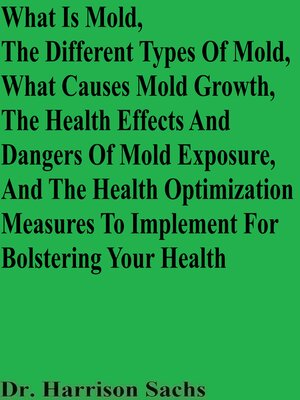What Is Mold, the Different Types of Mold, What Causes Mold Growth, the Health Effects and Dangers of Mold Exposure, and the Health Optimization Measures to Implement For...
audiobook (Unabridged)
By Dr. Harrison Sachs

Sign up to save your library
With an OverDrive account, you can save your favorite libraries for at-a-glance information about availability. Find out more about OverDrive accounts.
Find this title in Libby, the library reading app by OverDrive.



Search for a digital library with this title
Title found at these libraries:
| Library Name | Distance |
|---|---|
| Loading... |
This audiobook is narrated by a digital voice.
This essay sheds light on what is mold, demystifies the different types of mold, elucidates what causes mold growth, reveals the health effects and the dangers of mold exposure, and delineates the health optimization measures to implement for bolstering your health. Succinctly stated, mold is deemed to be "an organism that is" subsumed under "the fungi family". Furthermore, mold is not only deemed to be an irritant, but is also deemed to be an allergen. An exorbitant amount of people are allergic to mold. Mold is able to proliferate in indoor settings and outdoor settings. Moreover, mold is also able to proliferate in dark and damp environments. Even though "molds are microscopic fungi that live on plant or animal matter", succumbing to mold exposure can be eminently deleterious. There are a multitude of disparate types of mold. As of 2023, it was estimated that "there are approximately 150,000 types of molds". Some of the different types of mold encompass "Cladosporium, Penicillium, Aspergillus, Alternaria, Aureobasidium, Stachybotrys chartarum, and Trichoderma". Cladosporium is a type of mold that can pervade indoor settings. Furthermore, Cladosporium is a mold that "is brown, green, or black" in color that can be "found on wood, carpets, or fabrics, and in heating and cooling ducts" that are tainted with Cladosporium. Penicillium is another type of mold that can pervade indoor settings. Furthermore, Penicillium is a "fuzzy mold that is blue, green, or yellow" in color that can be "found under carpets, in basements, and in insulation" that is tainted with Penicillium. Aspergillusi is another type of mold that can pervade indoor settings. Furthermore, Aspergillus is a mold that "is green, white, or gray" in color that has "dark spots and a powdery look". Moreover, Aspergillusis can be "found in fabrics, walls, attics, and basements" that are tainted with Aspergillusis. Alternaria is another type of mold that can pervade indoor settings.







